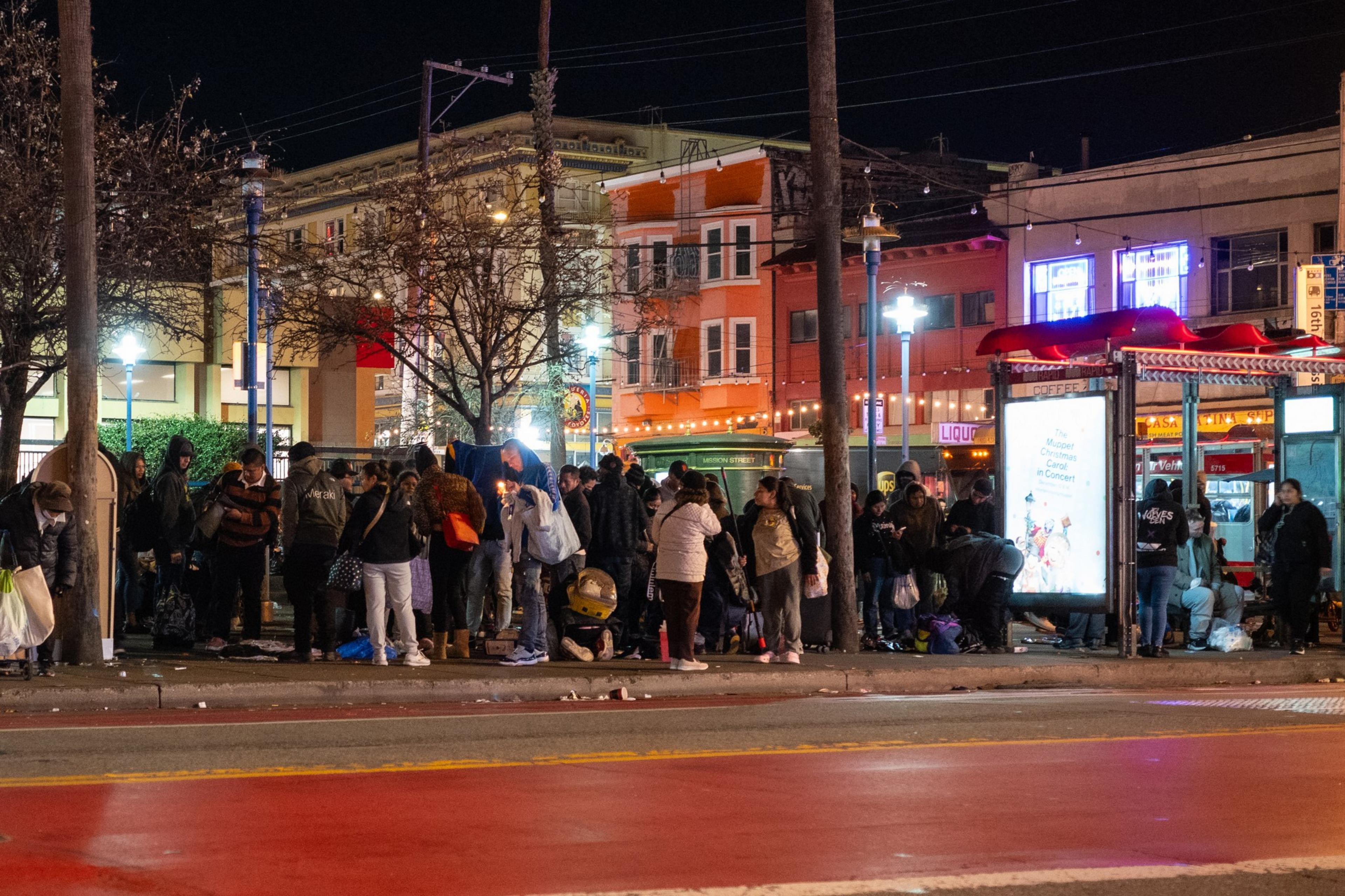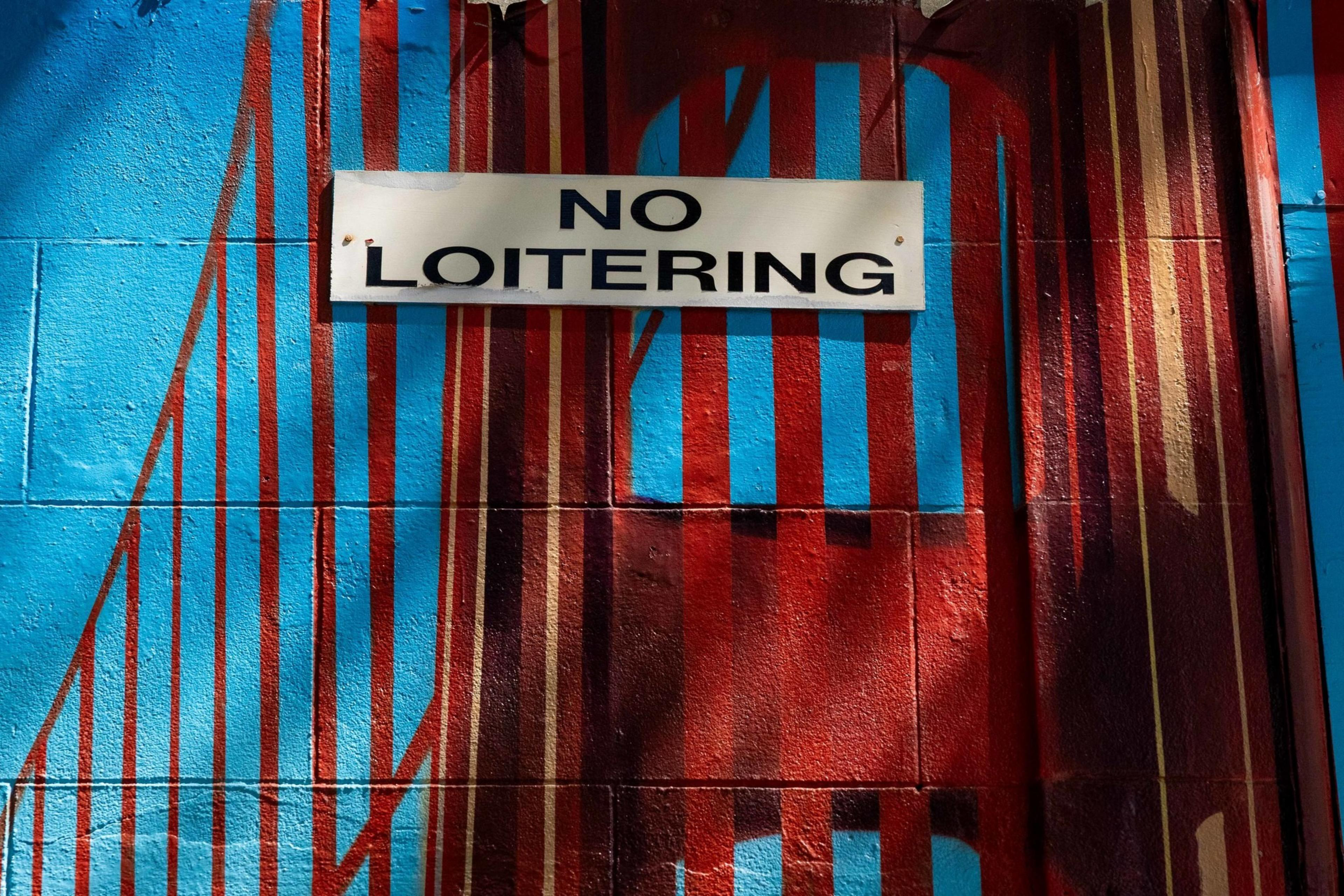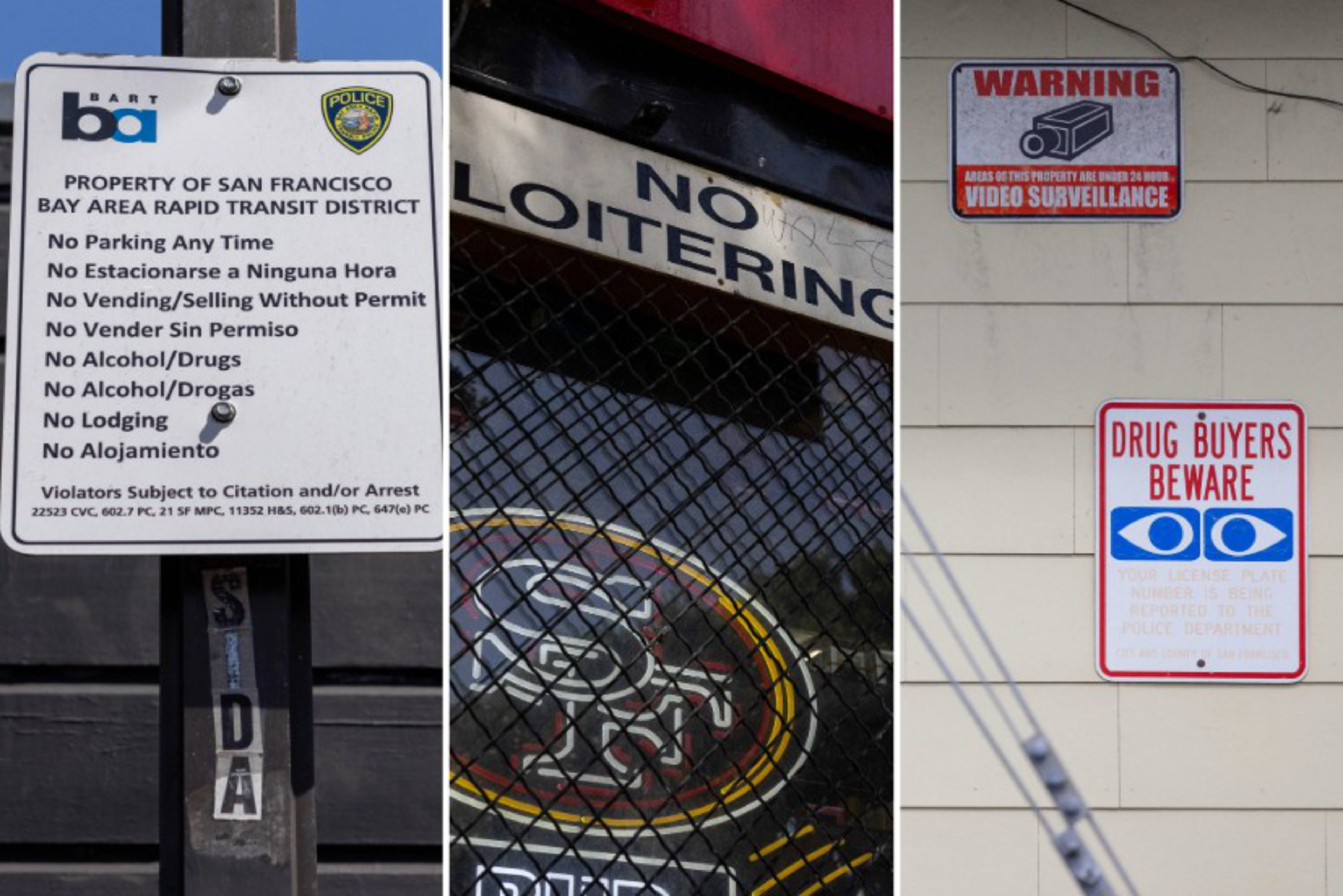Drug possession. Public intoxication. Resisting arrest. At first glance, there was nothing unusual about the claims San Francisco police levied against 44-year-old Chaz Burnett during two February arrests near Sixth Street that landed him behind bars.
But among those run-of-the-mill offenses was a far rarer allegation: criminal loitering.
For years, San Francisco Police Department officers rarely sent people to jail for “loitering to commit controlled substance offenses (opens in new tab).” Arrests for loitering began in earnest in 2024. Now, police are arresting alleged loiterers in droves. The Sheriff’s Department logged 193 bookings for the offense in the first three months of 2025.
Cracking down on public drug use has been one of the chief concerns of San Francisco political leaders and law enforcement in recent years, as the city has weathered a fentanyl epidemic. Under former Mayor London Breed, the city set up a downtown drug-dealing command center, brought in state police officers, and enlisted federal muscle. Instead of solving the problem, the efforts have simply bounced drug activity from hot spot to hot spot.
And the sweep charges are not sticking. Burnett hasn’t faced loitering charges for those two February arrests for being near Sixth Street with the intent to commit a drug crime. So far this year, the District Attorney’s Office has been more likely to decline cases involving accusations of drug-related loitering than it was to file charges.
The Public Defender’s Office calls the approach “cruel and performative.” And criminal justice experts contend that the strategy simply doesn’t work.

A ‘relatively new approach’
In December 2023, a year after Breed ordered a police crackdown on substance abuse, SFPD Chief Bill Scott issued guidelines to officers on how to enforce drug-related loitering.
“Illegal open-air drug dealing and use, and associated criminal activity, significantly impacts this city and department resources,” Scott wrote. He pointed to use of the loitering-with-intent statute as a potential deterrent.
To prove that a person is loitering and intends to commit a drug offense, officers must observe certain behaviors, such as furtively passing packages, beckoning to passersby, or acting as a lookout.
In the first quarter of 2023, there were six arrests for drug-related loitering. Soon after Scott’s bulletin, arrests rose, reaching 78 in the first three months of 2024. That trend has continued.
Many of the detentions are not one-offs, but en masse. After police descended on Jefferson Square Park the night of Feb. 26 with dirtbikes and drones in response to community complaints, they announced nearly 90 arrests.
But only three people were detained on suspicion of drug dealing, while 85 were accused of loitering with drug-related intent. While most of the 32 people booked into jail on suspicion of loitering also had an outstanding warrant or were charged with an additional crime, police sent three to jail that night solely on allegations of loitering.
On March 19, police officers and sheriff’s deputies conducted a similar mass arrest at Market and Seventh streets, alleging drug-related loitering crimes. A week later, a senior employee in the DA’s office told community members there were no plans to charge (opens in new tab) any of the people arrested that night.
The SFPD did not respond to a request for comment. Two police officers, a former officer, and a former prosecutor told The Standard that loitering arrests are part of the department’s effort to use every legal tool they have to wrangle chaos in city streets. Repeated arrests, they said, may harass users and dealers enough to cause them to stay away. The arrests also create a paper trail, making it easier to stop, detain, and book those involved in the future, potentially on more serious charges.
District Attorney Brooke Jenkins described the loitering charges as a “relatively new approach” by city law enforcement.
“In order to address the many issues prevalent on our streets, we must enforce all of our laws,” Jenkins said.
She said her office files charges when it believes it can successfully prove them to the standard needed in court.
But that is apparently not often. According to charging data (opens in new tab), prosecutors are less likely to pursue loitering cases than other alleged crimes. So far this year, the DA has charged about a third of the cases police presented that included a drug-related loitering offense and declined to pursue more than 40%.

‘Definitely not useful’
Researchers say the criminalization of loitering is a tactic that has been used in many U.S. cities but has consistently proved ineffective at tackling social drug problems.
“These tactics are definitely not useful. These are not drug prevention strategies; they are ‘clean our streets’ strategies that respond to public pressure,” said Yvon Dandurand, a professor of criminology at the University of the Fraser Valley in British Columbia. “At best, they simply displace the problem.”
Paul Lurgio, a professor of criminal justice at Loyola University in Chicago, said relying on loitering charges as a strategy isn’t successful unless it is paired with drug treatment, social services, and community involvement.
“They are gonna go back and loiter, and they’ll go where the drugs are being sold, and those are usually the same part of the city,” he said about what happens when enforcement efforts end.
'These are not drug prevention strategies; they are "clean our streets" strategies that respond to public pressure.'
Yvon Dandurand, professor of criminology at the University of the Fraser Valley in British Columbia
Courts often deem enforcement of loitering-with-intent laws “to be unconstitutionally vague or overbroad,” said Michael Scott, who directs the Center for Problem-Oriented Policing at Arizona State University. “They risk arrests of people who in fact are not engaged in drug buying or selling.”
Katharine Neill Harris, a fellow in drug policy at Rice University, said such tactics are often less about any specific crime and more about sending a message that there is a new social order.
“The police in some ways are the only authority that has the capacity to crack down on that form of disorder,” she said.
David Sjostedt contributed reporting.

